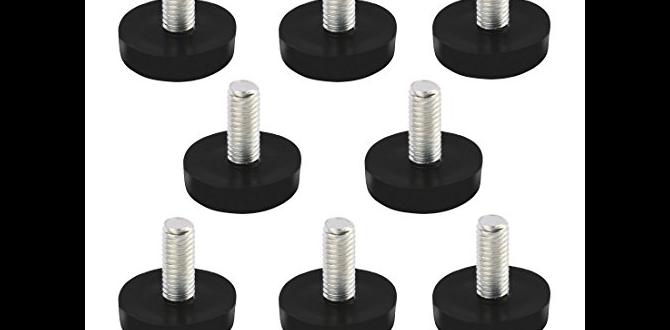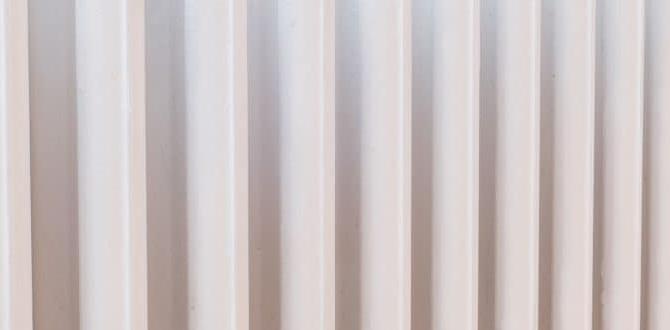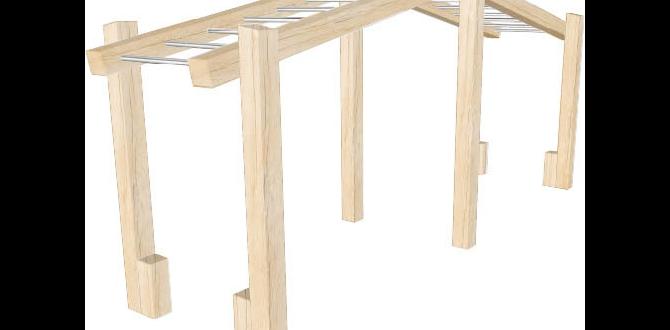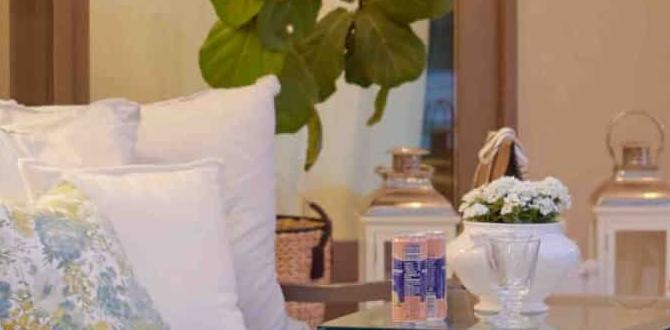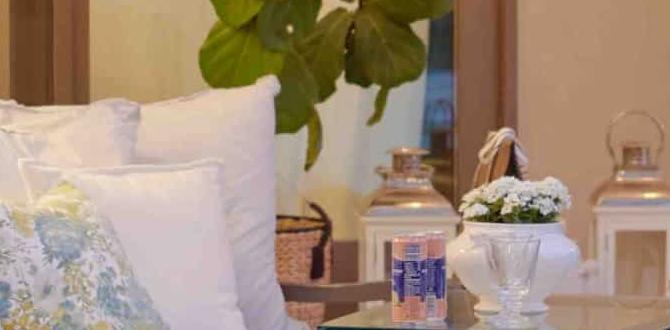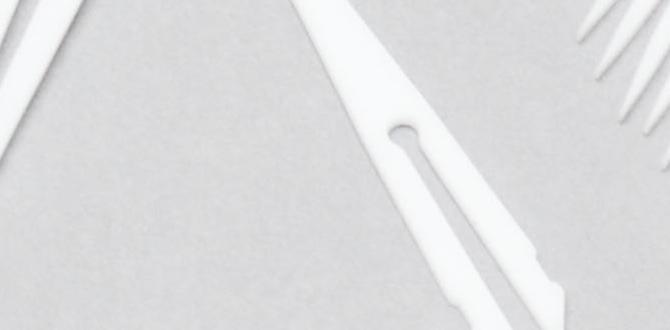Have you ever wondered how to make your garden thrive? Compost designs for gardening can be the secret you need. Many gardeners use compost to feed their plants and improve the soil. But did you know that the way you design your compost can affect your garden’s health? Imagine having rich, dark soil that helps your flowers bloom and your veggies grow big and tasty.
Composting doesn’t have to be a boring task. It can be fun and creative! You can even make a compost bin that fits your backyard style. Plus, composting helps the environment by reducing waste. That means you can contribute to a greener planet while helping your plants!
Have you seen those fancy compost designs at gardening stores? Many of them are easy to build at home. Whether you live in the city with a small yard or on a farm with lots of space, there are many options. Let’s explore the exciting world of compost designs for gardening together!
Creative Compost Designs For Gardening Enthusiasts

Compost Designs for Gardening
Creating a compost design for gardening is easy and fun! Composting helps recycle food scraps and yard waste, turning them into nutrient-rich soil for plants. Did you know that a good compost pile can heat up to over 150°F? That warmth helps speed up the breakdown of materials. You can use different styles, like bins or tumblers, to fit your space. A well-designed compost pile not only nourishes your garden but also reduces waste in landfills. Isn’t that cool?Understanding Composting Basics
Importance of composting in gardening. Key components of effective compost.
Composting enriches garden soil and helps plants grow strong. It recycles kitchen scraps and yard waste into nutrient-rich material. This natural process saves money, cuts down waste, and supports the environment. To make effective compost, include key components:
- Nitrogen-rich materials: Green waste like grass clippings and vegetable scraps.
- Carbon-rich materials: Brown waste such as dry leaves and cardboard.
- Water: Enough moisture keeps the microbes active.
- Air: Turning compost provides oxygen for decomposers.
By understanding these basics, you will create healthy compost to boost your gardening success!
Why is composting important?
Composting enriches the soil, reduces landfill waste, and helps plants thrive.
Different Types of Compost Designs
Traditional compost bins. Tumbler composters. Worm composting (vermicomposting).
Creating compost can be fun and useful! There are three main compost designs you might like. First, traditional compost bins are simple and easy to use. They hold ingredients like kitchen scraps and leaves. Second, tumbler composters are like merry-go-rounds for your food waste. Spin them, and they mix everything up quickly! Lastly, worm composting, or vermicomposting, uses squirmy friends to break down waste. Worms love to munch on scraps and turn them into nutrient-rich soil. Who knew having worms could be so entertaining?
| Compost Design | Benefits |
|---|---|
| Traditional Bins | Simple to set up; great for beginners. |
| Tumbler Composters | Mix quickly; speeds up composting process. |
| Worm Composting | Creates rich soil; fun to watch worms work! |
DIY Compost Bin Ideas
Wooden pallet compost bins. Wire mesh compost enclosures. Repurposed plastic containers.Composting at home can be fun and easy! Here are some clever DIY ideas for making compost bins:
- Wooden pallet compost bins: Use old pallets to create a sturdy bin. They allow air to flow, speeding up decomposition.
- Wire mesh compost enclosures: A simple wire mesh can hold your compost while letting moisture escape. It’s lightweight and easy to move!
- Repurposed plastic containers: Old trash bins or large containers work great. Just make sure to add holes for air.
These bins help turn kitchen scraps into rich soil. Composting is a great way to help plants grow and reduce waste!
How do I make a compost bin?
Start by collecting materials like wooden pallets or wire mesh. Then, build a structure that is open enough to allow air. Finally, add organic waste and mix regularly!
Innovative Composting Techniques
Hot composting for rapid results. Cold composting method for simplicity. Bokashi composting for indoor use.
Composting can be fun and easy! Hot composting works fast. It needs heat and aeration, speeding up the process to make compost in about 4-6 weeks. Cold composting is the lazy gardener’s best friend. Just pile up your kitchen scraps and yard waste and wait for a year. Easy-peasy! Bokashi composting is perfect for indoors. It uses a special mix to break down food waste quickly. Plus, it doesn’t smell! Try mixing up these methods for a composting adventure.
| Technique | Speed | Ideal Use |
|---|---|---|
| Hot Composting | Fast! (4-6 weeks) | Active gardeners |
| Cold Composting | Slow (1 year) | Busy bees |
| Bokashi Composting | Moderate | Indoor use |
Budget-Friendly Compost Solutions
How to create a compost system with minimal expense. Sourcing materials from local waste.
Creating a compost system doesn’t have to be costly. Many materials for compost can be found around your home or local area. Start by collecting kitchen scraps like vegetable peels and coffee grounds. You can also use dried leaves and grass clippings. These can be awesome additions to your compost. They help make rich soil for your garden!
- Plastic bins or old wooden pallets can be used to hold your compost.
- Ask neighbors for extra leaves or food scraps.
- Visit local farms for discarded materials, like manure.
What can I use for composting at home?
You can use vegetable scraps, coffee grounds, dry leaves, and grass clippings from your yard. These items reduce waste and save money too!
Using local waste is eco-friendly. It’s like giving a second life to things that would normally go to the trash. Plus, it helps our environment! Composting is a fun way to recycle while helping your flowers and plants grow healthy.
Space-Saving Compost Designs for Urban Gardening
Vertical composting systems. Composting in small outdoor spaces like balconies.
Urban gardeners can thrive even in small spaces. Vertical composting systems offer a clever solution. They save ground space while providing nutrients for plants. Balconies can become composting spots too! Here’s why it works:
- Space-efficient design: Fits neatly against walls.
- Easy access: Grab compost without bending down.
- Great for small gardens: Perfect for city living.
With just a few containers, anyone can create compost and grow healthy plants. Making your own compost is fun and helps reduce waste!
What is vertical composting?
Vertical composting is stacking compost bins to save space. This method needs less area while providing the same benefits. It’s perfect for balconies where room is tight.
Maintaining Your Compost System
Regular maintenance tips for optimal composting. Troubleshooting common compost issues.
To keep your compost healthy, regular checks are important. Mix your compost every few weeks. This helps air reach all the layers. If it smells bad, it may be too wet. Add dry leaves or cardboard. If it’s too dry, sprinkle some water. Keep a balance for optimal composting. Also, watch for pests like fruit flies. If they appear, cover with a layer of browns like dry grass. Your compost will thrive!
What should I do if my compost smells?
Strong odors mean you need to fix the problem. Add browns like dried leaves or paper. This balances your compost and reduces smell.
- Mix compost regularly.
- Add dry materials if it’s wet.
- Water only if it’s too dry.
Utilizing Finished Compost in Your Garden
How to use compost effectively in different gardening scenarios. Benefits of applying finished compost to plants and soil.
Finished compost is like the secret sauce for your garden! First, mix it into your soil to boost its nutrition. Plants love it, and they’ll grow like they’re on rocket fuel! You can also sprinkle it on top of the soil around your plants. This tasty layer keeps moisture in and fights pesky weeds. Plus, it feeds the soil life, which is like a party for worms and microbes. Remember: happy soil means happy plants!
| Gardening Scenario | How to Use Compost | Benefits |
|---|---|---|
| Flower Beds | Mix compost into the soil | Improves blooms and health |
| Vegetable Gardens | Top-dress plants with finished compost | Better yields and tastes |
| Container Gardens | Add compost to potting mix | Enhanced nutrients for potted plants |
The benefits are huge! For instance, compost can improve soil structure by up to 30% and keep it moist. As Bill Nye the Science Guy would say, “Science rules!” So sprinkle some love (and compost) in your garden for plants that will sing! 🌱
Conclusion
In conclusion, compost designs for gardening help create rich soil for plants. You can choose simple bins, tumblers, or even piles. Each design has its benefits. Start composting at home to reduce waste and improve your garden. Explore more resources online to find the perfect compost system for you. Happy gardening and composting!FAQs
What Are The Benefits Of Using Different Compost Designs In Home Gardening?Using different compost designs helps you in many ways. First, they create good soil for your plants. This means your fruits and veggies will grow better. Different designs can also fit your space and needs. Lastly, composting helps reduce waste by recycling scraps.
How Can I Build A Compost Bin Using Recycled Materials For My Garden?You can build a compost bin using old wooden pallets. First, find four pallets and set them in a square shape. Leave one side open for easy access. You can also use a large plastic tub with holes for airflow. Fill it with kitchen scraps and yard waste. Remember to turn it regularly to help it break down!
What Are The Best Composting Methods For Small Urban Gardens Versus Large Rural Gardens?For small urban gardens, you can use a worm bin or a compost tumbler. These methods are neat and fit in tight spaces. For larger rural gardens, a backyard compost pile works well. You can pile grass, leaves, and food scraps outside. Both ways help turn waste into healthy soil for plants!
How Does The Size And Shape Of A Compost Pile Affect Its Efficiency And Decomposition Process?The size and shape of a compost pile can really change how well it works. A bigger pile warms up faster, which helps turn food scraps into compost quicker. If your pile is too small, it might not get enough heat. Additionally, a tall pile can help with airflow, letting important bacteria do their job. Keeping your pile well-shaped helps everything break down evenly!
What Considerations Should Be Made When Choosing A Location For A Compost Setup In My Garden?When you choose a spot for composting, think about sunlight. It’s good to have some sun, but not too much. You also want to find a place that’s easy to reach. It should be close to your kitchen for scraps but far enough from play areas. Finally, make sure the ground drains well. Too much water can make your compost smell bad!

